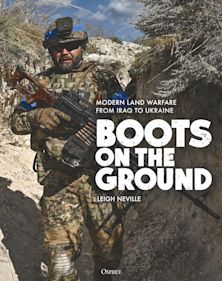- Home
- OSPREY PUBLISHING
- Period
- Modern Warfare
- Israeli Fortifications of the October War 1973
Israeli Fortifications of the October War 1973
Israeli Fortifications of the October War 1973
- Delivery and returns info
-
Free CA delivery on orders $40 or over
You must sign in to add this item to your wishlist. Please sign in or create an account
Description
The Bar Lev Line along the Suez Canal was born out of the overwhelming victory of the Israel Defense Forces (IDF) in the Six Day War of 1967. Devastated by their defeat, the Egyptian army began a prolonged campaign of artillery bombardments of Israeli positions causing many casualties. Accordingly, the IDF Chief of Staff, General Haim Bar-Lev, ordered the construction of a series of fortified positions and observation posts that were named the Bar Lev Line by the Israeli press, thanks to its inevitable association with the heavily fortified Maginot Line.
This book examines the original 23 positions of the Bar Lev Line, known as Moazims (Moaz is 'castle keep' in Hebrew), each of which were between five and 15 kilometers apart and surrounded by barbed wire and minefields. With rare photographs and cutaway artwork, the design of these positions is described. Finally, the author analyzes the effectiveness of these positions when the Egyptians launched an offensive on Yom Kippur 1973. Manned by just 436 reservists the Moazims were quickly cut off and the Israeli defenders paid a high price with a casualty rate of almost 50 percent. Although widely criticized, the Bar Lev Line proved a success during the war of attrition, and in 1973 it was the political and military failures which allowed the Moazims to be surrounded, rather than the failure of the defensive line itself.
Product details
| Published | Nov 18 2008 |
|---|---|
| Format | Paperback |
| Edition | 1st |
| Extent | 64 |
| ISBN | 9781846033612 |
| Imprint | Osprey Publishing |
| Illustrations | 30 b/w; 27 col |
| Dimensions | 248 x 184 mm |
| Series | Fortress |
| Short code | FOR 79 |
| Publisher | Bloomsbury Publishing |
About the contributors

Resources
Discover More
Visit our exclusive member's website to see artwork, maps, and more from this book.

Resources
Book Vote
Tell us what titles you would like to see published by Osprey, then vote for your favourites in our monthly book vote!



























